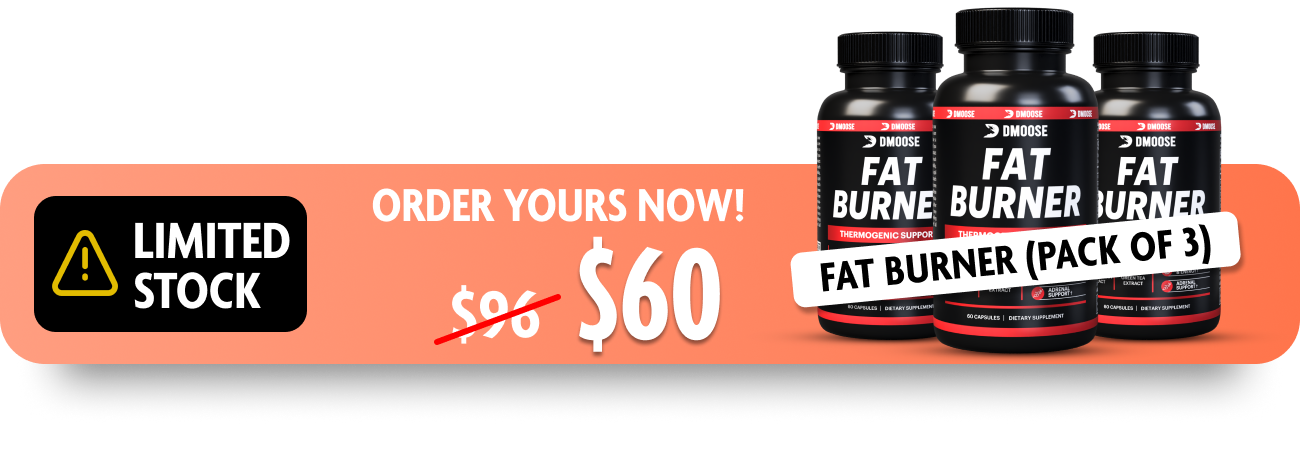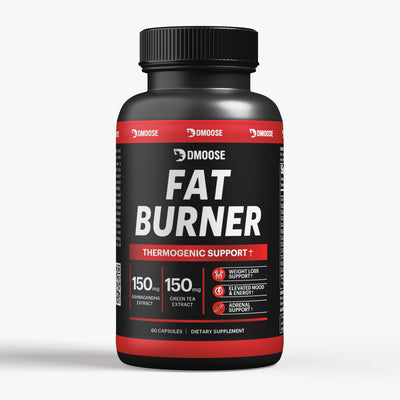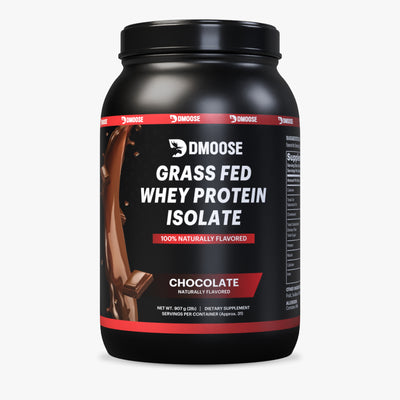Losing weight is essential, but it's also crucial that you lose the right kind of weight. Too often, people try to lose weight by cutting body fat and hitting lower numbers on the scale rather than gaining muscle.
Unfortunately, this approach can put you at a greater risk for injury and even lead to rhabdomyolysis. This dangerous condition causes your muscle fibers to break down and release into the bloodstream, damaging the kidneys and liver.
Body recomposition is an approach to weight loss that emphasizes the importance of losing fat and gaining muscle. "You don't gain weight when your cells have too many calories. Instead, your body stores the excess calories as fat."
Unfortunately, this common misconception about weight gain may harm your efforts to drop pounds. Besides trimming and toning bodies, body recomposition has several other potential benefits.
This article will cover the benefits of body recomposition and tips on incorporating it into your own routine.
What is Body Recomposition & How Does It Work?
Body recomposition is a more holistic way of approaching fitness. It takes your physical appearance and how you feel into account—not just the number on the scale.
According to research, body recomposition helps you lose fat and increases lean muscle mass, improves cardiovascular fitness, and increases energy levels. In addition, it may help you sleep better and improve overall health.
In another study published in The American Journal of Clinical Nutrition, healthy men who increased their muscle mass by 3% over two years could improve blood flow and lower blood pressure without increasing fat mass.
When you lose weight, there is a greater loss of lean body mass than fat mass. As a result, your metabolism slows down because your body's energy needs to decrease, making it difficult to lose weight in the future.
By recomposing or gaining lean body mass, you can increase your metabolism so that it is easier to lose weight in the future. You also reduce the risk of health conditions associated with obesity, such as diabetes and heart disease.
Body recomposition work involves a combination of diet, exercise, and rest. The first step is to create a calorie deficit. You can do this by reducing your daily calorie intake and increasing the amount of time you spend exercising.
The American College of Sports Medicine recommends 60 to 90 minutes of moderate-intensity exercise daily, five days a week. Start with short bursts of activity throughout the day and gradually build up to longer periods of physical activity.
You should also aim to consume no more than 30 percent of your total daily calories from fats. A good rule of thumb is to replace foods high in fats with foods high in fiber, such as whole grains, fruits, and vegetables.
Related Article: A Complete Guide to Nutritarian Meal Plan for Beginners
Is Body Recomposition Possible - What Does Science Say?
Science suggests that body recomposition is possible, though it may take several years to achieve. Research suggests gradual lifestyle changes that include regular exercise and eating a healthy diet can help you increase your lean body mass and maintain a healthy weight over time.
While it's unlikely you'll be able to add 10 pounds of muscle to your frame after a few weeks of weight training, it is possible to make small improvements that can lead to significant weight loss. Strength training can increase resting energy expenditure and belly fat, especially when combined with aerobic exercise.
A meta-analysis published in The Journal of the American Medical Association showed that strength training resulted in an average weight increase of 2.3 pounds in previously inactive women and 5.6 pounds in previously active women. Strength training can also improve the overall quality of life and reduce fatigue, pain, and depression.
Eating a high-protein diet has also been shown to help reduce belly fat. According to the National Heart, Lung, and Blood Institute, eating at least 20 grams of protein at each meal can boost your metabolism by 80 to 100 calories per day. High-protein diets may also help prevent cravings and improve overall health. For best results, combine a regular exercise routine with a protein-rich diet to shed unwanted pounds and prevent future weight gain.
How to Lose Belly Fat

As previously mentioned, eating a high-protein diet can help you lose weight, but it’s not only the amount you eat but the quality of what you consume that matters. Processed foods tend to have high amounts of fat and sugar, which can sabotage your weight loss efforts.
Instead, you should try to eat natural foods that are high in protein and rich in vitamins and nutrients. Avoid sugary drinks and fruit juice, which is high in sugar. Instead of drinking soda or juice, drink plain water. Not only will this reduce your calorie intake, but it will also help you stay hydrated.
Before changing your diet and exercise routine, it's a good idea to consult a doctor to make sure it's safe for you to lose weight. You can also use fat burner supplements and a healthy diet to support your fat loss.
Related Article: How to Lose Belly Fat Naturally and Safely?
How to Lose Fat and Gain Muscle At the Same Time
The best way to lose fat and gain muscle is to incorporate strength training into your workout routine. Strength training also helps burn fat because your body uses more energy when lifting weights than when working out with cardio equipment. Research suggests combining strength training with cardiovascular exercise is one of the best ways to lose fat and build muscle simultaneously.
While body recomposition may be possible for anyone with the right diet and exercise regimen, it can be difficult to achieve and maintain. Strength training and cardiovascular exercise are good start if your goal is to lose weight.
Let's discuss the steps you need to take to see promising results!
Do Lots of Heavy Weightlifting
When it comes to burning fat and increasing muscle mass, heavy-weight training is one of the best methods you can use. Weight training forces you to use a lot of energy, which can help you burn more calories and build lean muscle tissue over time. As per fitness experts, lift heavy three times a week and perform exercises targeting all major muscle groups for best results.
Maintain a Small Calorie Deficit
To lose fat, you need to have a calorie deficit. This means you need to eat fewer calories than you burn daily. Your body needs the energy to function throughout the day, so even if you eat very little food, you will still burn calories through basic activities such as walking or talking. A calorie deficit is typically around 500 calories per day for women and men.
Eat Sufficient Protein
Protein contains amino acids that are the building blocks for muscle tissue, so eating a diet high in protein can help support muscle growth and recovery. However, a high-protein diet does not promote muscle growth on its own. You must also lift weights and follow an effective exercise regime to see results.
Get Enough Sleep
7-9 hours of sleep per night is recommended for most people. However, a study on sleep duration and quality in elite athletes found that some athletes might need as much as 10 hours of sleep for optimal recovery and performance. Studies have shown that sufficient sleep can improve athletic performance and help you maintain a healthy weight.
Manage Stress Levels
Maintaining a good work-life balance and avoiding stress are very important if you want to maintain a healthy lifestyle. Stress can increase blood pressure and blood sugar levels and lead to weight gain and other health problems. Eating a healthy diet and regular exercise are effective ways to manage stress and prevent health problems.
Increase Your Fiber Intake
The human body requires energy to keep itself functioning normally, and energy from food comes from carbohydrates, fats, and protein. Fiber is a type of carbohydrate that is found in plant foods such as fruits and vegetables.
There are two main functions of fiber in the body - it slows digestion and promotes bowel movements so that stool moves through the intestines easily and prevents constipation. A high-fiber diet can also help keep cholesterol levels in check and promote weight loss by making you feel full for longer periods of time.
Stay Hydrated
Staying hydrated is essential for good health. It helps keep your kidneys, heart, muscles, and other organs working properly. It also helps regulate body temperature, lubricate joints, and aids the transportation of nutrients throughout the body. Consider adding hydration supplements to your workouts.
FAQs
1. How difficult is Body Recomposition?
The body recomposition process is relatively simple, but it does take time and effort to see results. You must change your diet and exercise routine to see your desired results. Diet and exercise go hand in hand when building muscle and reducing body fat.
2. Why are people leaning towards body recomposition instead of weight loss?
Most people are turning to body recomposition (also known as the muscle gain process) because they want to lose weight but still have toned muscles (not bulky muscles).
3. Is body recomposition possible?
Yes, it is possible. Following a proper diet and workout routine can quickly build muscle and lose fat simultaneously.
4. How much time does it take to see results from body recomposition?
This depends on individual body type and genetics. It may take some people to see results for a few months. But by following the right diet and exercise program, you can achieve your goal faster than you think.
The Bottom Line
People worldwide are looking for ways to lose fat and build muscles fast. Getting in shape takes time and dedication, but it can also be easy and quick. Body recomposition can help you achieve your goals in less time. It is a simple process that can help you burn fat and gain lean muscle without spending hours in the gym daily. All you need to do is follow the proper diet and exercise program to get the results you are looking for.
Reading List
Gain Lean Muscles: Workout, Nutrition Plan & More
Speed Up Muscle Recovery 10x Faster
Article Sources
- “ACSM | The American College of Sports Medicine.” ACSM_CMS, https://www.acsm.org. Accessed 31 Oct. 2022.
- Barakat, Christopher, et al. “Body Recomposition: Can Trained Individuals Build Muscle and Lose Fat at the Same Time?” Strength & Conditioning Journal, vol. 42, no. 5, Oct. 2020, pp. 7–21. journals.lww.com, https://doi.org/10.1519/SSC.0000000000000584.
- Chaput, Jean-Philippe, and Angelo Tremblay. “Adequate Sleep to Improve the Treatment of Obesity.” CMAJ : Canadian Medical Association Journal, vol. 184, no. 18, Dec. 2012, pp. 1975–76. PubMed Central, https://doi.org/10.1503/cmaj.120876.
- Graber, Eric. “ASN Journals Examine the Links between Nutrition, Physical Activity, and Muscle.” American Society for Nutrition, 26 Oct. 2020, https://nutrition.org/asn-journals-examine-the-links-between-nutrition-physical-activity-and-muscle/.
- Lemmer, J. T., et al. “Effect of Strength Training on Resting Metabolic Rate and Physical Activity: Age and Gender Comparisons.” Medicine and Science in Sports and Exercise, vol. 33, no. 4, Apr. 2001, pp. 532–41. PubMed, https://doi.org/10.1097/00005768-200104000-00005.
- Ribeiro, Alex S., et al. “Moderate and Higher Protein Intakes Promote Superior Body Recomposition in Older Women Performing Resistance Training.” Medicine and Science in Sports and Exercise, vol. 54, no. 5, May 2022, pp. 807–13. PubMed, https://doi.org/10.1249/MSS.0000000000002855.
- Schroeder, Elizabeth C., et al. “Comparative Effectiveness of Aerobic, Resistance, and Combined Training on Cardiovascular Disease Risk Factors: A Randomized Controlled Trial.” PLoS ONE, vol. 14, no. 1, Jan. 2019, p. e0210292. PubMed Central, https://doi.org/10.1371/journal.pone.0210292.
- Vitale, Kenneth C., et al. “Sleep Hygiene for Optimizing Recovery in Athletes: Review and Recommendations.” International Journal of Sports Medicine, vol. 40, no. 8, Aug. 2019, pp. 535–43. PubMed Central, https://doi.org/10.1055/a-0905-3103.
- Willoughby, Darryn, et al. “Body Composition Changes in Weight Loss: Strategies and Supplementation for Maintaining Lean Body Mass, a Brief Review.” Nutrients, vol. 10, no. 12, Dec. 2018, p. 1876. PubMed Central, https://doi.org/10.3390/nu10121876.

















